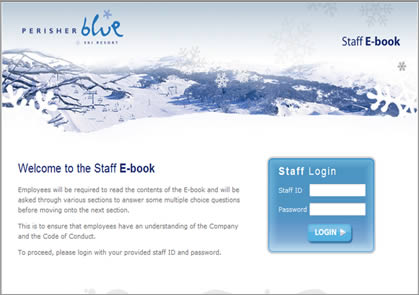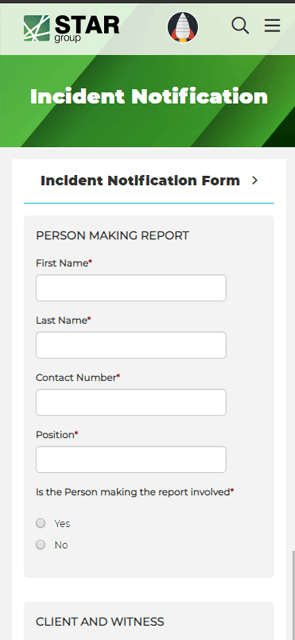Over the last few weeks we have introduced you to 12 key business processes you can implement on your intranet to deliver measurable value to both the organisation and the people working there. Certain processes may resonate more with you than others however, many of the principles and features in one process can be applied across different or related processes.
Here is recap of the 12 processes:
- Connecting people
- Accessing organizational forms, templates and documents
- Authoring, publishing and accessing content
- Producing and managing an event
- Managing projects
- Replacing paper forms and email with data-driven flows
- Facilitating learning and training
- Managing HR processes
- Onboarding new employees
- Supporting the IT helpdesk and applications
- Delivering customer service
- Supporting continuous improvement
We also published a workbook that covers all 12 of these concepts and comes with a spreadsheet checklist of each process. You can download the workbook here.
So far we have covered in some detail: connecting people, accessing resources, managing projects, and facilitating training. In this blog we take a look at managing HR processes and supporting the IT helpdesk, both critical to getting people on board and keeping them connected, and both effective in increasing engagement when delivered via your intranet. Human resources is key to ensuring an organisation effectively communicates, intranets provide a great tool to simplify doing exactly that - especially when it comes to knowing how to effectively prepare for digital workspace success.
Managing the Processes of HR: Intranet Best Practices and their Benefits
Individual employees, managers and HR functions need to complete a lot of people-related processes. These include appraisals, manager approvals, updating HR information, applying for jobs and getting promoted.
With so many HR transactions to complete, both simple and complex, the intranet makes life easier for everybody. By supporting employee and manager self-service, the intranet empowers staff to complete simple tasks themselves and relieve the burden on HR professionals. Key intranet benefits also include easier administration of activities for the HR, such as reminding staff to complete employee surveys and read HR communications.

How the intranet helps
- Streamlining simple approvals for HR-related requests using custom online forms and associated workflow
- Reworking more complex HR processes, such as 360-degree appraisals, so they are more efficient
- Distributing key HR reference information targeted to different groups to reduce the number of questions to HR staff
- Encouraging employee self-service through integration with or deep linking to the HR system or portal
- Setting up a 'social' channel to submit questions to HR specialists
- Providing a community space for HR professionals to discuss issues and share ideas between themselves
- Delivering HR-related updates and reminders to staff
- Managing compliance where an HR policy or document must be read, for example in a regulated industry
- Gauging employee opinion using surveys to gather feedback
Benefits
- Improves simple and complex HR processes, saving time and costs
- Supports employee self-service and self-sufficiency through systems and content
- Creates better awareness of HR policies and procedures
- Supports better interaction among the community of HR professionals and with users
Example use cases
- Approve employee annual leave
- Access the HR system to update address details
- Submit appraisal form
- Access information on the process to apply for maternity leave
- Ask a question about pay to an HR professional
- Discussion forum for HR professionals to share insights
- Annual employee survey
Intranet capabilities used
- Custom forms
- Workflows
- Content organiser
- Surveys and polls
- Social tools: blogs, wikis and discussion threads
- Community space
Supporting the IT helpdesk and applications
Intranets help IT departments in a number of ways, including supporting the helpdesk and the use of applications. An intranet can drive a self-service approach to the use of technology, easing the pressure on the busy IT helpdesk while simultaneously encouraging best practices in using different applications. The result is a more digitally literate workforce and a more efficient IT department.
The intranet supports the IT function by distributing relevant information, facilitating processes and forums so users can connect to IT professionals, and providing a gateway to different applications.

How the intranet helps
- Alerting employees with important IT-related messages such as outages or issues being resolved
- Providing user guides, videos and FAQs on different applications and other IT practices
- Facilitating IT-related training
- Streamlining simple processes such as making an IT request or logging a call with the helpdesk through custom forms and workflow
- Providing the front door to the wider 'digital workplace' so employees can easily connect to the applications they use on a regular basis
- Providing social tools to ask questions to IT experts
- Establishing support communities for specialist applications where some questions might be best answered by system owners and super users, rather than the IT helpdesk
Benefits
- Reduces number of calls to IT helpdesk
- Supports self-service approaches to resolve IT queries
- Upskills the workforce on use of applications
- Makes simple IT processes more efficient
Example use cases
- System alerts for outages
- FAQs for common issues
- Report an IT issue
- Access user guides and videos
- Link to applications
- Application support community
Intranet capabilities used
- Custom forms
- Workflows
- Content organiser
- Community space
- Social Q&A
- News
Utilising the tools on your intranet can transform it into a productivity machine and alleviate many frustrations caused by repetitive mundane processes. Automating processes can also reduce risk and inefficiencies while supporting the need for compliance and governance.
Have any more questions regarding the intranet, human resources and how the former can help the latter? Explore our comprehensive summary on how the intranet can strengthen people and culture within the modern workplace.
Don’t forget to download our workbook covering all 12 processes you can implement on your intranet for a great return on involvement – the new ROI!
